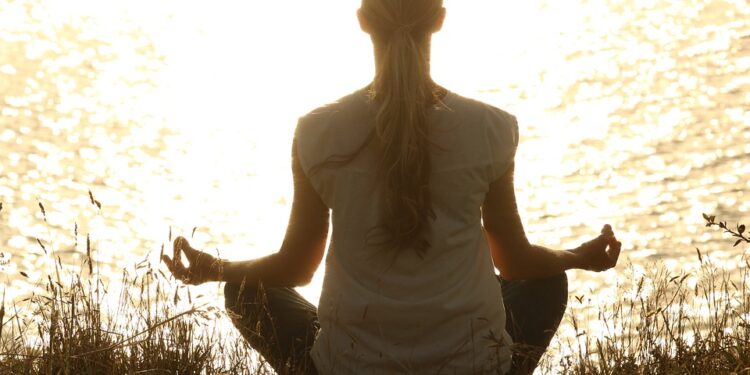Mastering the Art of Mindfulness: A Guide to Transformative Meditation Practices
Are you looking to enhance your mental well-being, reduce stress, and improve your overall quality of life? If so, mastering the art of mindfulness through transformative meditation practices may be the key to unlocking a more peaceful and fulfilling existence. In this comprehensive guide, we will explore the benefits of mindfulness, provide an overview of various meditation techniques, and offer practical tips for incorporating mindfulness into your daily routine.
The Benefits of Mindfulness
Mindfulness is the practice of bringing one’s attention to the present moment without judgment. By cultivating a state of mindfulness, individuals can learn to observe their thoughts and emotions without getting caught up in them. This leads to a greater sense of inner peace, clarity, and self-awareness.
Research has shown that mindfulness can have a wide range of benefits for both mental and physical health. Some of the key benefits include:
- Reduced stress and anxiety
- Improved focus and concentration
- Enhanced emotional regulation
- Increased self-compassion and empathy
- Improved relationships
- Enhanced overall well-being
Types of Meditation Practices
There are many different types of meditation practices that can help cultivate mindfulness. Some of the most common techniques include:
Mindfulness Meditation
Mindfulness meditation involves focusing on the present moment, often by paying attention to the breath or bodily sensations. This practice helps individuals become more aware of their thoughts and emotions without becoming attached to them.
Loving-Kindness Meditation
Loving-kindness meditation involves cultivating feelings of love, compassion, and goodwill towards oneself and others. This practice can help individuals develop greater empathy and compassion for themselves and those around them.
Body Scan Meditation
Body scan meditation involves systematically scanning the body for any areas of tension or discomfort. This practice can help individuals become more aware of physical sensations and release any built-up tension in the body.
Walking Meditation
Walking meditation involves walking slowly and mindfully, paying attention to each step and the sensations of the body as it moves. This practice can help individuals cultivate a sense of presence and connection with the world around them.
Practical Tips for Incorporating Mindfulness Into Your Daily Life
Now that you have a better understanding of the benefits of mindfulness and the various meditation practices available, here are some practical tips for incorporating mindfulness into your daily routine:
Start Small
Begin by dedicating just a few minutes each day to mindfulness practice. As you become more comfortable with the practice, you can gradually increase the amount of time spent meditating.
Find a Quiet Space
Choose a quiet and comfortable space where you can meditate without distractions. This could be a corner of your home, a park, or any other peaceful location that allows you to focus on your practice.
Set a Routine
Establish a regular meditation routine by setting aside a specific time each day for your practice. This will help make mindfulness a habit and ensure that you prioritize your mental well-being.
Practice Mindfulness Throughout the Day
In addition to formal meditation practice, try to incorporate mindfulness into your daily activities. This could involve paying attention to your breath while waiting in line, eating mindfully, or simply taking moments throughout the day to pause and check in with yourself.
Common Questions About Mindfulness
Here are some common questions about mindfulness that you may have:
Is mindfulness the same as meditation?
While meditation is a common practice for cultivating mindfulness, mindfulness itself is a state of being present and aware in the moment. Meditation is just one way to develop mindfulness.
Can anyone practice mindfulness?
Yes, mindfulness is a practice that can be beneficial for people of all ages and backgrounds. It does not require any special skills or abilities, just a willingness to be present and observe your thoughts and emotions without judgment.
How long does it take to see the benefits of mindfulness?
The benefits of mindfulness can vary from person to person, but many individuals report feeling a sense of calm and clarity after just a few sessions of meditation. Consistent practice over time can lead to more profound and lasting benefits.
Conclusion
In conclusion, mastering the art of mindfulness through transformative meditation practices can have a profound impact on your mental and physical well-being. By incorporating mindfulness into your daily routine and exploring different meditation techniques, you can cultivate a greater sense of presence, awareness, and inner peace. Remember to start small, find a quiet space, set a routine, and practice mindfulness throughout the day to maximize the benefits of your practice. With dedication and consistency, you can transform your life through the power of mindfulness.
Remember, mindfulness is not about achieving perfection or getting rid of all your thoughts and emotions. It’s about learning to observe them with curiosity and compassion, allowing you to respond to life’s challenges with greater resilience and grace. So, take a deep breath, find a comfortable seat, and begin your journey towards a more mindful and fulfilling life today.



































































